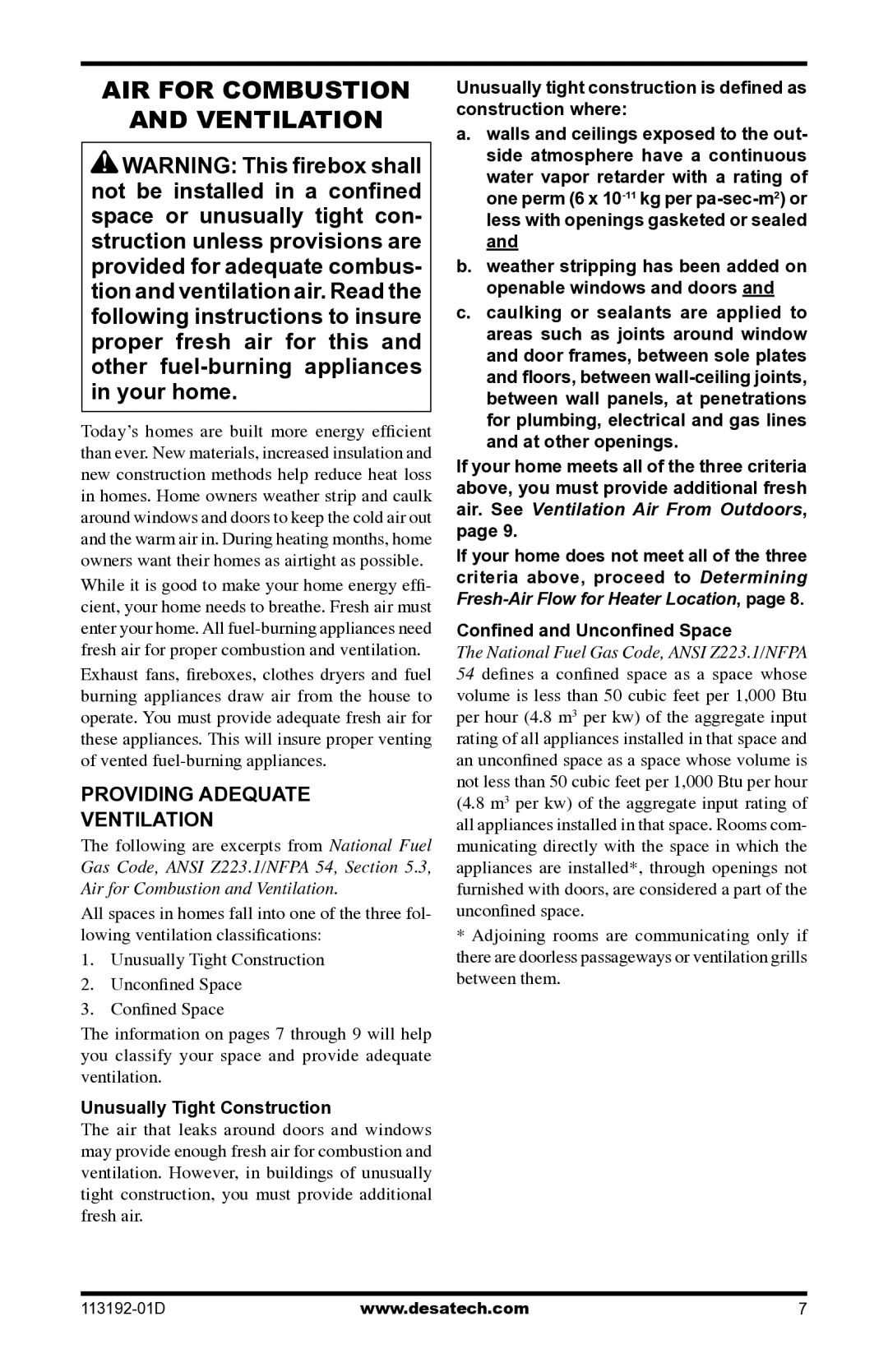VSGF36NR, VSGF36PR specifications
The Desa VSGF36NR and VSGF36PR are innovative electric fireplaces designed to create a cozy atmosphere while ensuring modern efficiency. These models stand out in the electric fireplace market due to their blend of aesthetic appeal and advanced technology.One of the key features of the VSGF36NR and VSGF36PR is their realistic flame technology, which provides a lifelike fire experience. The LED flame effect is adjustable, allowing users to customize the ambiance according to their preferences. This feature, combined with a log set that mimics real wood, offers an inviting glow that transforms any space.
Energy efficiency is another significant characteristic of these models. Both fireplaces use energy-efficient LED lights, resulting in lower energy consumption compared to traditional heating methods. Furthermore, they have adjustable heat settings, enabling users to control the amount of warmth emitted, which ultimately helps in managing energy expenditure and ensuring comfort.
The VSGF36NR is designed for natural venting, making it an ideal option for homes that require the integration of a venting system. On the other hand, the VSGF36PR model features a power vent option, providing versatility for installation in various spaces, including basements or rooms without existing venting. This flexibility facilitates installation in a range of environments, creating easy access to the warmth and charm of a fireplace.
Safety is a top priority with these models. They come equipped with an automatic shut-off feature, which activates if the unit overheats, ensuring peace of mind for users. The cool-to-the-touch exterior design further enhances safety, making these electric fireplaces suitable for homes with children and pets.
Both the VSGF36NR and VSGF36PR have a sleek, modern design, allowing them to fit seamlessly into any decor style, from contemporary to traditional. Their compact size means they can easily be integrated into living rooms, dining areas, or even bedrooms, making them a versatile addition.
Overall, the Desa VSGF36NR and VSGF36PR electric fireplaces are exemplary models combining aesthetics, advanced technology, and safety. They offer a practical solution for those looking to enjoy the warmth and comfort of a fireplace without the hassle of traditional wood-burning options. With their innovative features and thoughtful design, they are an excellent choice for enhancing any home.

